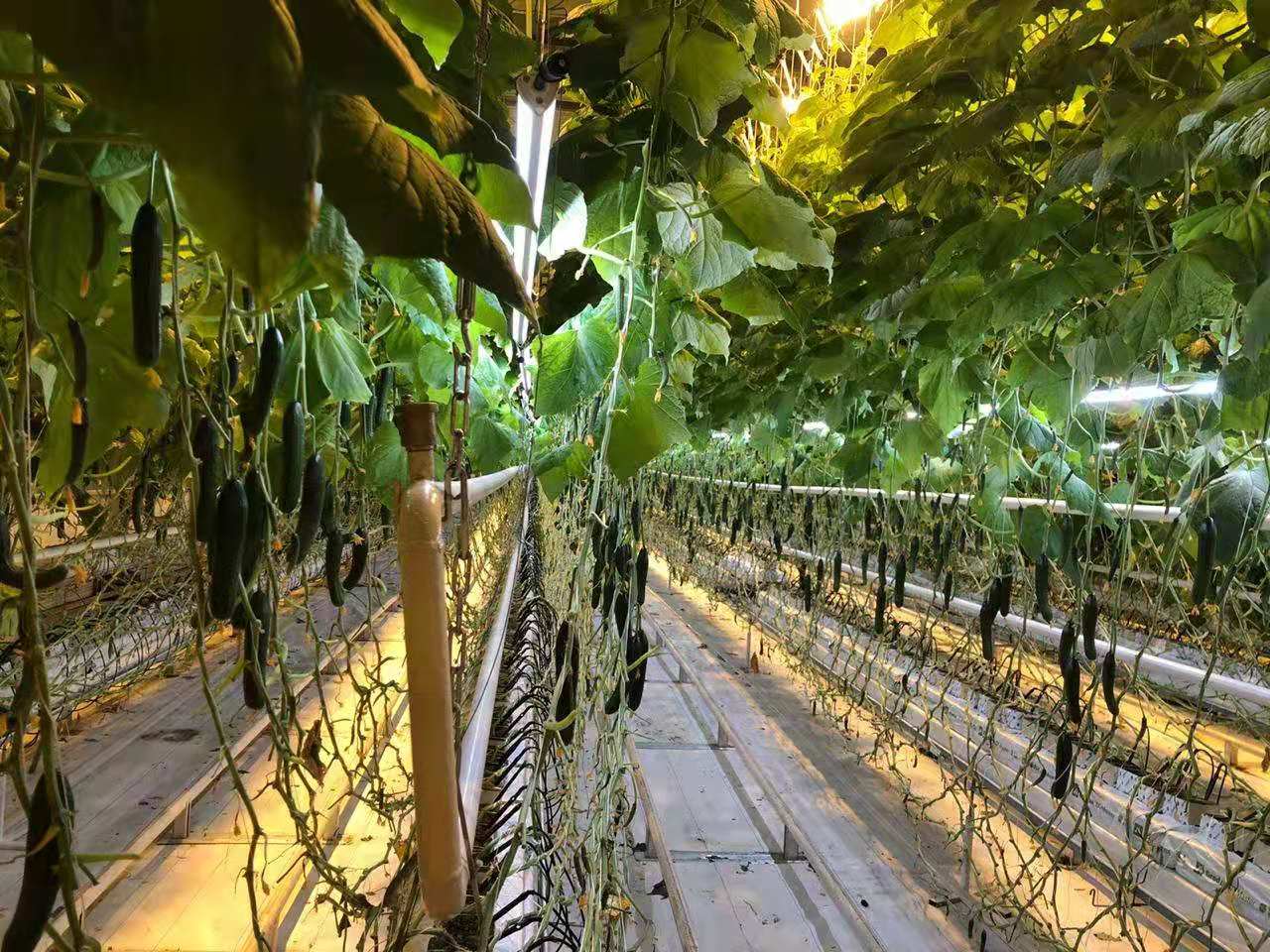Increasing Yield : LED Interlights for Tomatoes & Cucumbers
Greenhouses are an excellent environment for growers to grow in. In greenhouses, plants are protected from the harsh outdoor conditions they have to face: wind, drought, extreme heat, biting cold, pests and small animals that try to eat them. Imagine growing vegetables all year round without worrying about the seasons or the outside environment, how favorable it is. Moreover, in terms of increasing yields, it opens up more possibilities . Isn't that great?
So what crops should be planted? What is the best crop for greenhouse production? How can growers and business investors maximize the benefits of their planting? These questions are all worth thinking about before starting a planting project.
Tomatoes are the most common vegetables grown in greenhouses, followed by cucumbers. they have many characteristics in common:
- They are vine crops with thick foliage.
- They are warm-weather plant.
- Both are in high demand, suitable for large-scale cultivation.
No matter what is planted, yield is always a concern for the grower. What are the factors that affect the yield of these two common, highly similar greenhouse vegetables? What can growers do to improve their yields ?
There are many factors that affect greenhouse productivity, including temperature, relative humidity, irrigation, fertilization, disease incidence, electricity costs, labor costs,etc. Many of them can be easily and accurately provided in a controlled growing environment,like greenhouse.
Today we're going to talk about a very special influencing factor, and one that's now widely accepted by greenhouse growers viz, lighting condition. There are practical examples of cucumber yields increased significantly after led interlight was provided, increasing by nearly half, and the produced cucumbers were of higher quality and better taste.

In reality,people has never stopped the study for higher yield cultivation. At first, in order to protect cucumbers from outdoor influences , growers began to explore the feasibility of moving cucumbers growth from outdoors to indoors. Later it was found that diseases and insect pests from soil had not been eliminated. Then people began to explore soilless cultivation and successfully find new planting pattern-cucumber hydroponically. These measures have proved to be effective in increasing production.
Things do not end here ,the research on high yield continues. In the process of cucumber hydroponics in the greenhouse, It was found that relying on natural light only solved the problem of seasonal cucumber production. if growers want to produce all year round,it seems that there is a slight shortage of sunlight in winter. To deal with this problem, greenhouse growers have to find a way to make up for the lacking sunlight first.
Whether it is the conventional plant lamp before or the current popular LED grow light, greenhouse gardening artificial lighting appears in line with the needs of human indoor vegetable production.
For some crops, the top-mounted plant light actually solved the problem of sunlight lacking in the winter, and because of the application of these lights, many growers have realized that the crops that grew by natural light in the greenhouse did not give full play to their growth potential.
But for high-density crops like tomatoes and cucumbers, their lower layers of foliage overlap, shading each other. So no matter how much light you supplement at the top, there is still not enough light at the bottom. The shortage of light at the lower layer will lead to reduced fruit production, poor appearance, poor taste. It is completely contrary to the grower's pursuit of increasing production direction.
If there is a grow light , which is available for installing in-between vine crops and is allowed to be close to plants. it undoubtedly would be the ideal solution to the problem of light lacking in the underlayer. before there were LED lights , it is unthinkable. As the conventional plant lamps emit so much heat that leaves of crops can not withstand . Today, however, LED interlight solve this problem well.
Atop Lighting HL03 Horti-Reina LED interlight is a high efficiency linkable led interlight solution for vine crops .it can emit sidewards light distribution range up to 120 degree , keep the lower leaves of vine crops in your commercial greenhouse get optimal uniform light and result in an increased yield.

